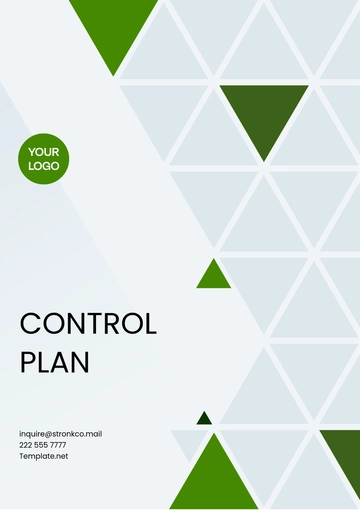Free Fitness and Health Improvement Plan

Prepared by:
[YOUR NAME]
[YOUR COMPANY NAME]
1. Introduction
The journey toward fitness and health improvement is a commitment to transforming not only your physical well-being but also your mental and emotional health. This comprehensive plan offers a structured, balanced approach to achieving optimal health through targeted exercise routines, mindful eating, and lifestyle modifications. By following this plan, you will create sustainable habits that foster lasting health improvements, helping you build strength, energy, and overall wellness.
2. Fitness Goals
2.1 Short-Term Goals
Lose 5 pounds in 1 month: Achieve gradual and sustainable weight loss by combining healthy nutrition with regular exercise.
Exercise at least 4 times per week: Establish a consistent workout routine that includes cardiovascular, strength, and flexibility training.
Improve cardiovascular endurance: Engage in regular cardio exercises to enhance your stamina, heart health, and overall fitness.
2.2 Long-Term Goals
Maintain a healthy BMI: Aim for a body mass index (BMI) within the healthy range through balanced nutrition and consistent exercise.
Build lean muscle mass: Focus on strength training exercises to increase muscle definition, strength, and metabolism.
Establish a sustainable fitness routine: Develop habits that support long-term health, ensuring fitness becomes a permanent part of your lifestyle.
3. Exercise Plan
3.1 Weekly Schedule
Day | Activity | Duration |
|---|---|---|
Monday | Cardio and Abs | 30 mins |
Tuesday | Strength Training (Upper Body) | 45 mins |
Wednesday | Yoga | 60 mins |
Thursday | Strength Training (Lower Body) | 45 mins |
Friday | Rest or Light Walking | 30 mins |
Saturday | HIIT and Core | 30 mins |
Sunday | Rest | - |
3.2 Exercise Descriptions
Cardio: Activities such as running, cycling, swimming, or brisk walking that increase heart rate and improve cardiovascular health. Each session will last 30-45 minutes.
Strength Training: Focus on building muscle strength and endurance with exercises targeting both the upper and lower body. These workouts include weight lifting, resistance exercises, and bodyweight movements.
Yoga: A 60-minute session focused on increasing flexibility, mindfulness, and relaxation, helping to reduce stress and improve overall balance and mobility.
HIIT (High-Intensity Interval Training): A high-energy workout combining short bursts of intense activity followed by periods of rest or low-intensity work. This session focuses on calorie burn, metabolic improvement, and muscle toning.
Core Workouts: Strengthen the abdominal, back, and pelvic muscles, improving stability and posture, crucial for overall strength and fitness.
4. Nutrition Plan
4.1 Daily Caloric Intake
Begin by calculating your daily caloric needs based on your age, gender, weight, height, and activity level. This will help establish a caloric range that aligns with your goals (e.g., weight loss, muscle gain, or maintenance). Focus on nutrient-dense foods within this range to ensure you're fueling your body for optimal performance and recovery.
4.2 Meal Suggestions
Breakfast: Start your day with a nutrient-packed meal like oatmeal topped with fresh fruits, nuts, and a scoop of protein powder for sustained energy.
Lunch: A grilled chicken salad with mixed greens, colorful vegetables, and a drizzle of olive oil for healthy fats will provide a balanced and satisfying midday meal.
Dinner: Enjoy a wholesome dinner of baked salmon, quinoa, and steamed vegetables for lean protein, fiber, and healthy fats to support muscle repair and overall health.
Snacks: Include healthy snacks like protein shakes, mixed nuts, or Greek yogurt with berries. These snacks will keep your metabolism active and provide fuel between meals.
4.3 Hydration
Staying hydrated is essential for both exercise performance and general well-being. Aim to drink at least 8 cups (2 liters) of water per day. Adjust this amount based on activity level, climate, and individual needs.
5. Lifestyle Modifications
5.1 Sleep Hygiene
Quality sleep is essential for muscle recovery, hormone regulation, and overall mental health. Ensure you get 7-9 hours of sleep each night by establishing a calming bedtime routine. Limit screen time an hour before bed, and create a sleep-friendly environment by keeping the room cool, dark, and quiet.
5.2 Stress Management
Daily Meditation or Deep Breathing: Incorporate mindfulness practices such as meditation or deep-breathing exercises into your daily routine to reduce stress levels.
Physical Activity for Stress Relief: Regular exercise is one of the most effective ways to reduce stress. Whether through yoga, cardio, or strength training, movement helps release tension and improve mood.
Work-Life Balance: Make time for activities you enjoy, and ensure you are balancing work, personal time, and social engagements to reduce burnout and maintain mental clarity.
6. Monitoring and Evaluation
Track your progress regularly to stay motivated and ensure continuous improvement. Keep a fitness journal or use wearable technology to record key metrics, including weight, body measurements, strength progress, and fitness milestones. Regularly assess your progress against your goals—weekly for short-term goals and monthly for long-term goals. If needed, make adjustments to your exercise routine, diet, or stress management techniques.
7. Conclusion
This Fitness and Health Improvement Plan is designed to help you achieve lasting health and fitness results through a comprehensive approach. By following this plan consistently and making adjustments as needed, you’ll be on your way to a healthier, stronger, and more balanced life. Remember, success is about making gradual, sustainable changes, so stay committed, and embrace the journey toward improved health and fitness.
- 100% Customizable, free editor
- Access 1 Million+ Templates, photo’s & graphics
- Download or share as a template
- Click and replace photos, graphics, text, backgrounds
- Resize, crop, AI write & more
- Access advanced editor
The Fitness and Health Improvement Plan Template from Template.net offers a fully editable and customizable solution for tracking and enhancing your wellness journey. Easily adjust the plan to fit your specific goals and lifestyle. Editable in our AI Editor Tool, this template ensures a tailored approach to achieving optimal fitness and health improvements.
You may also like
- Finance Plan
- Construction Plan
- Sales Plan
- Development Plan
- Career Plan
- Budget Plan
- HR Plan
- Education Plan
- Transition Plan
- Work Plan
- Training Plan
- Communication Plan
- Operation Plan
- Health And Safety Plan
- Strategy Plan
- Professional Development Plan
- Advertising Plan
- Risk Management Plan
- Restaurant Plan
- School Plan
- Nursing Home Patient Care Plan
- Nursing Care Plan
- Plan Event
- Startup Plan
- Social Media Plan
- Staffing Plan
- Annual Plan
- Content Plan
- Payment Plan
- Implementation Plan
- Hotel Plan
- Workout Plan
- Accounting Plan
- Campaign Plan
- Essay Plan
- 30 60 90 Day Plan
- Research Plan
- Recruitment Plan
- 90 Day Plan
- Quarterly Plan
- Emergency Plan
- 5 Year Plan
- Gym Plan
- Personal Plan
- IT and Software Plan
- Treatment Plan
- Real Estate Plan
- Law Firm Plan
- Healthcare Plan
- Improvement Plan
- Media Plan
- 5 Year Business Plan
- Learning Plan
- Marketing Campaign Plan
- Travel Agency Plan
- Cleaning Services Plan
- Interior Design Plan
- Performance Plan
- PR Plan
- Birth Plan
- Life Plan
- SEO Plan
- Disaster Recovery Plan
- Continuity Plan
- Launch Plan
- Legal Plan
- Behavior Plan
- Performance Improvement Plan
- Salon Plan
- Security Plan
- Security Management Plan
- Employee Development Plan
- Quality Plan
- Service Improvement Plan
- Growth Plan
- Incident Response Plan
- Basketball Plan
- Emergency Action Plan
- Product Launch Plan
- Spa Plan
- Employee Training Plan
- Data Analysis Plan
- Employee Action Plan
- Territory Plan
- Audit Plan
- Classroom Plan
- Activity Plan
- Parenting Plan
- Care Plan
- Project Execution Plan
- Exercise Plan
- Internship Plan
- Software Development Plan
- Continuous Improvement Plan
- Leave Plan
- 90 Day Sales Plan
- Advertising Agency Plan
- Employee Transition Plan
- Smart Action Plan
- Workplace Safety Plan
- Behavior Change Plan
- Contingency Plan
- Continuity of Operations Plan
- Health Plan
- Quality Control Plan
- Self Plan
- Sports Development Plan
- Change Management Plan
- Ecommerce Plan
- Personal Financial Plan
- Process Improvement Plan
- 30-60-90 Day Sales Plan
- Crisis Management Plan
- Engagement Plan
- Execution Plan
- Pandemic Plan
- Quality Assurance Plan
- Service Continuity Plan
- Agile Project Plan
- Fundraising Plan
- Job Transition Plan
- Asset Maintenance Plan
- Maintenance Plan
- Software Test Plan
- Staff Training and Development Plan
- 3 Year Plan
- Brand Activation Plan
- Release Plan
- Resource Plan
- Risk Mitigation Plan
- Teacher Plan
- 30 60 90 Day Plan for New Manager
- Food Safety Plan
- Food Truck Plan
- Hiring Plan
- Quality Management Plan
- Wellness Plan
- Behavior Intervention Plan
- Bonus Plan
- Investment Plan
- Maternity Leave Plan
- Pandemic Response Plan
- Succession Planning
- Coaching Plan
- Configuration Management Plan
- Remote Work Plan
- Self Care Plan
- Teaching Plan
- 100-Day Plan
- HACCP Plan
- Student Plan
- Sustainability Plan
- 30 60 90 Day Plan for Interview
- Access Plan
- Site Specific Safety Plan





























